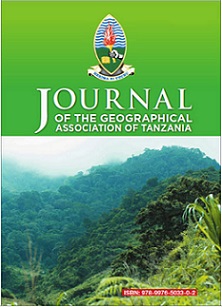Community Access to Livelihood Sustenance Resources in Protected Areas: A Case Study of the Makao WMA, Tanzania
Abstract
Local community bordering protected areas bear conservation costs like crop damage, injury and loss of land despite the conservation benefits and tourism attractions situated within their localities. This paper examines the extent to which community adjacent to protected areas access subsistence resources in Makao WMA. The study was conducted in Makao Wildlife Management Area in Jinamo, Mwabagimu and Makao villages, in Meatu District, Tanzania. The data were collected from 281 heads of households using a survey design within a mixed approach. A random number generator was used to generate a random number of households to be surveyed in each study village. The study found a limited access to subsistence resources as local communities are restricted to access land for agriculture, livestock grazing, settlements, firewood, wood for charcoal production, building poles and grasses; hence limiting their livelihood supports. The study results show that limited access to subsistence resources in protected areas may, in the long-run, results to resource-use conflicts in wildlife management areas. This study recommends local community capacity building programs that enable local advocacy for sustainable wildlife conservation and ensure resources access.
Keywords: subsistence resources, resources access, wildlife management areas


